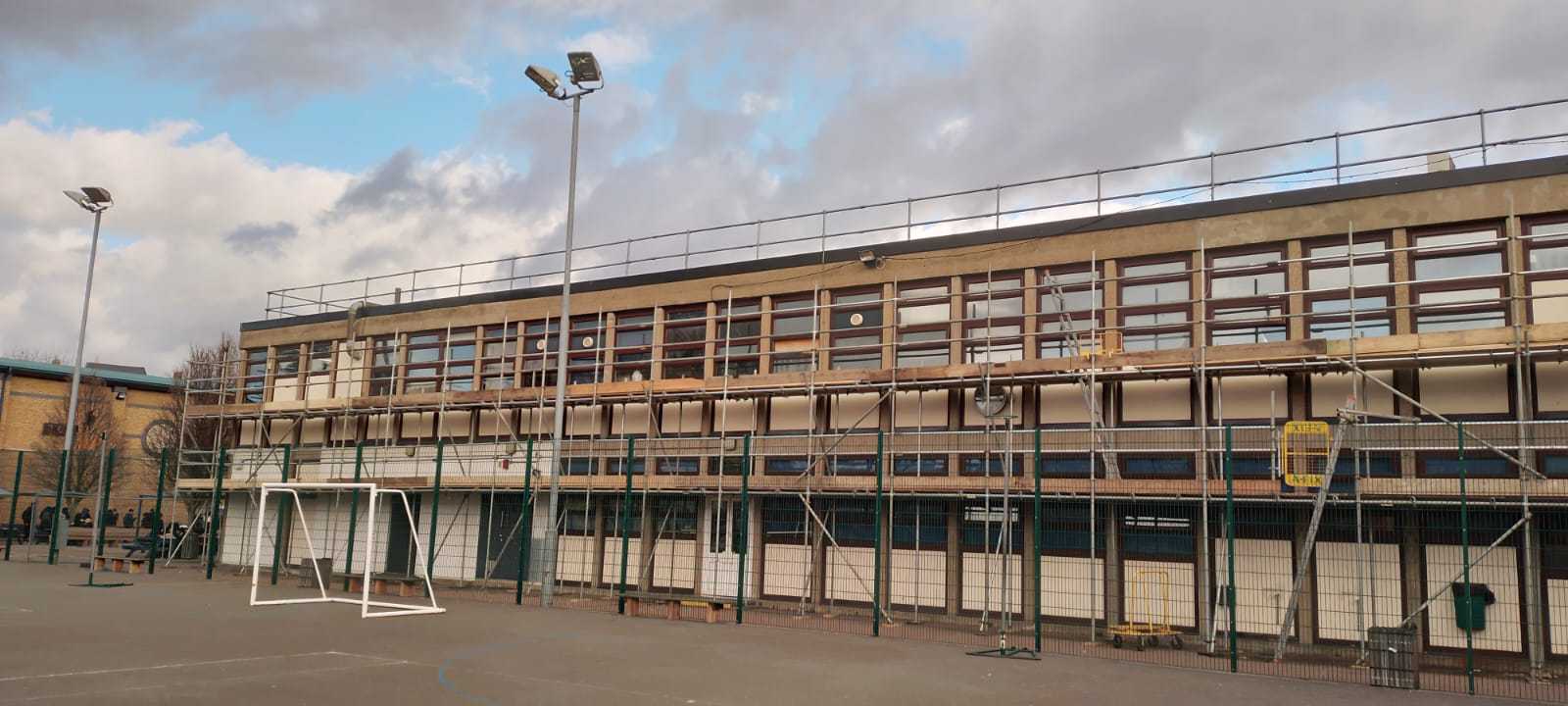
Scaffolding in Cold Weather: Key Considerations for Safe and Effective Installation in the UK
In the UK, the colder months can bring unique challenges to construction work, particularly when it comes to scaffolding. From freezing temperatures to adverse weather conditions such as snow, rain, and strong winds, scaffolding installation and maintenance during the winter months require extra attention to ensure safety and quality. Whether you’re a construction professional or a homeowner planning a project, understanding the impact of cold weather on scaffolding and how to mitigate potential risks is crucial.
1. Impact of Cold Weather on Scaffolding Materials
One of the primary considerations when using scaffolding in cold weather is the effect of low temperatures on the materials used in its construction. Scaffolding typically consists of metal tubes, boards, and fittings, all of which can be affected by freezing conditions.
• Metal Components: In freezing temperatures, metal components can become brittle, making them more susceptible to cracking or damage during installation. This risk is particularly high for scaffolding made from steel, which is commonly used in the UK. It’s essential to inspect all metal parts for any signs of wear, rust, or fractures before use.
• Wooden Boards: Wooden scaffolding boards can absorb moisture in cold and wet conditions, leading to potential swelling, warping, or cracking. Wet boards can also become slippery, posing a significant safety hazard to workers. It’s crucial to store wooden boards in dry conditions and check them regularly for damage.
2. Safety Risks in Cold Weather
Cold weather can introduce a range of hazards that affect the safety of scaffolding operations. For example:
• Slippery Surfaces: Ice and snow can accumulate on scaffolding structures, making it difficult for workers to climb and work safely. To prevent slips, it’s important to clear snow and ice from scaffolding surfaces regularly and use anti-slip devices where necessary.
• Reduced Visibility: Winter days are shorter, and fog, snow, or rain can impair visibility. Adequate lighting must be provided for workers to navigate scaffolding safely, and weatherproof gear such as high-visibility jackets should be worn to enhance visibility.
• Frostbite and Hypothermia: Prolonged exposure to cold temperatures can lead to health risks such as frostbite or hypothermia. Workers should be provided with insulated clothing, gloves, and hats, and regular breaks should be scheduled to ensure they remain warm.
3. Adjustments to Installation Methods
Scaffolding companies and contractors in the UK must take specific precautions to ensure that scaffolding is erected and maintained properly during the winter months:
• Pre-Erection Inspections: Before beginning scaffolding work, a thorough inspection of the site should be conducted. This includes checking for any ice or snow buildup, assessing ground conditions (frozen ground can affect the stability of the structure), and ensuring that the weather forecast does not indicate worsening conditions.
• Use of Winter-Grade Materials: In cold conditions, it’s wise to use materials that are more durable and resistant to cold. For example, scaffolding fittings made from cold-resistant alloys can perform better in low temperatures, ensuring that the structure remains secure.
• Adequate Fixing: In winter, scaffolding structures may need to be more securely fixed to the building to account for wind conditions, which can be harsher in cold weather. Additional bracing or supports might be required to maintain stability.
4. Regular Maintenance and Inspection
Because of the challenges posed by cold weather, scaffolding requires frequent inspections throughout the winter months. This includes checking for any signs of ice buildup, ensuring that all components remain secure, and verifying that the structure is not subjected to excessive stress due to frozen conditions. In some cases, scaffolding may need to be adjusted or dismantled if weather conditions deteriorate.
5. Legal and Regulatory Considerations
UK law, including regulations set by the Health and Safety Executive (HSE), requires employers to ensure the health and safety of workers, even in adverse weather conditions. This includes providing safe working conditions on scaffolding, ensuring that any risks associated with cold weather are mitigated, and that workers are equipped with the necessary protective gear.
In conclusion, scaffolding in cold weather presents unique challenges that require careful planning, regular maintenance, and a focus on safety. By following best practices, such as using the right materials, conducting thorough inspections, and taking extra precautions to prevent accidents, construction professionals can ensure that scaffolding remains safe and effective, even in the harshest winter conditions.

